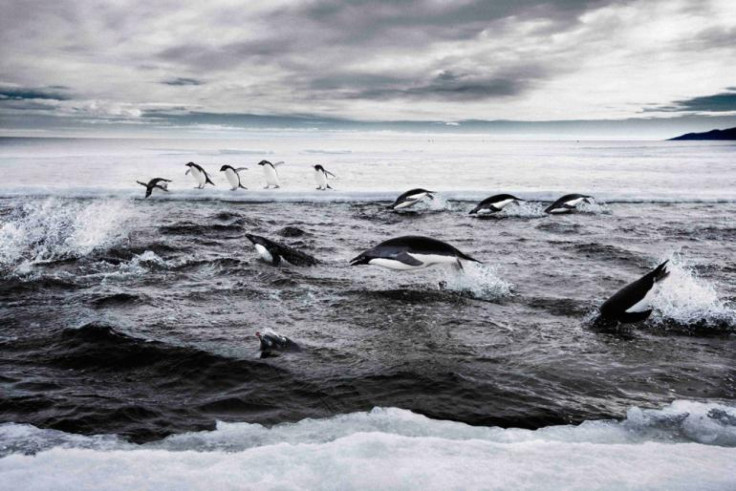In Antarctica, A New Push To Create the World’s Largest Marine Reserve

It was an ambitious plan that galvanized the international conservation community and would have doubled the amount of protected area in the world’s oceans. But after unsuccessful meetings in the German seaport of Bremerhaven this July, the Antarctic marine reserve remained just that: an ambitious plan.
But that could change as early as next week when more than 200 scientists and politicians representing 25 delegations from around the world gather in Tasmania for yet another meeting under the Commission for the Conservation of Antarctic Marine Living Resources, or Ccamlr, to discuss two enormous marine protected areas, or MPAs, each of which would be the world’s largest.
The meeting, to be held in Hobart from Oct. 21 to Nov. 1, will be Ccamlr’s third try at designating protections for some of the most pristine marine environments on earth, but to achieve that goal, all members of Ccamlr must agree on a unified plan -- and one country in particular hasn’t always seen eye to eye with its counterparts.
The Russian delegation, with support from the Ukrainians, raised legal issues during the meetings in July as to whether Ccamlr had the authority to establish MPAs in the first place, despite the fact that the organization established its first high-seas MPA around the South Orkney Islands four years ago.
Up for debate was the Ross Sea MPA proposal, from New Zealand and the U.S., and the East Antarctica MPA proposal, put forth by Australia, France and the European Union -- each of which would have each covered about 1.6 million square kilometers (600,000 square miles) of water around Antarctica. Scientists say this stretch of sea, roughly the size of India, represents the most intact ocean ecosystem left on earth, with more than 10,000 unique species, including most of the world’s penguins, whales, seabirds, colossal squid and Antarctic toothfish (also known as “Chilean sea bass”). Its conservation, however, has tested international willingness to restrict commercial activity in the high seas.
“The actions of the Russian delegation have stalled progress on protecting the Ross Sea and East Antarctica, and have put international cooperation and goodwill at risk, two key ingredients needed for global marine conservation,” Andrea Kavanagh at the Pew Charitable Trusts, which fought for the MPAs under its Southern Ocean campaign, said back in July.
This past Tuesday, however, Kavanagh took a more conciliatory tone: “Countries can overcome the false starts of the past year by coming together this month to safeguard these vital areas,” she said in a call to action. “The international community has invested significant resources in studying, proposing and vetting Antarctic marine protections. Now, it’s time to act.”
As part of a compromise, New Zealand and the U.S. published details of their revised Ross Sea plan last month, which cut the size of the reserve to 1.34 million square kilometers (517,000 square miles), of which 1.25 million square kilometers (483,000 square miles) would be a no-take zone. While it would still be the largest single MPA in the world, and while many core elements of the original proposal remain unchanged, several figures involved in Antarctic conservation were none too pleased.
“For the Ross Sea, giving up so much before securing the support of the countries that have opposed its protection would be a great strategic mistake that could mean we end up protecting very little,” Jim Barnes, Executive Director of the Antarctic and Southern Ocean Coalition, said last month. Most environmental groups, while initially critical of the changes, have now come to embrace the current proposal.
The East Antarctica plan, which includes a patchwork of smaller marine reserves, remains virtually unchanged. Of the two MPAs, the East Antarctica proposal was and remains less stringent in its protections.
A 2004 Princeton University study found that the nutrient-rich waters from the deep ocean are pulled to the surface by a single ocean-circulation pattern in the Southern Ocean and then distributed around the world. Thus, scientists say these two proposed MPAs are vitally important as they support an estimated three-quarters of all marine life.
On Wednesday, the foreign ministers of Australia, France, New Zealand and the United States, as well as the Commissioner for Maritime Affairs and Fisheries of the European Union, reiterated their joint call for marine reserves in the Southern Ocean. “The establishment of such MPAs follows through on the vision expressed by all nations at the World Summit on Sustainable Development in Johannesburg in 2002 and the Rio+20 conference in 2012,” the ministers said, adding that the reserves were “based on sound and best available science, will provide a unique laboratory for continuation of marine research, and will have profound and lasting benefits for ocean conservation.”
Though U.S. Secretary of State John Kerry signed off on the statement, there are fears that the U.S. government shutdown could undermine any attempt at creating the reserves in 2013. The United States has been one of the project’s biggest proponents, and while most delegates have already arrived in Hobart, the shutdown is understood to have prevented the American delegation from attending, at least thus far. If the shutdown continues, many fear that the discussion on protecting the Antarctic could be pushed back yet another year.
© Copyright IBTimes 2024. All rights reserved.






















